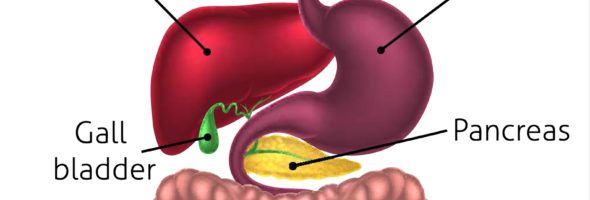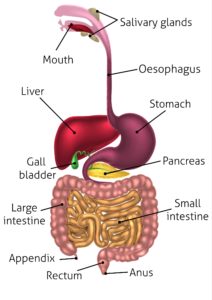Activity Outline
Kelly and I chose to explore the human digestive system for our Learning Situation. We modeled the path of a snack of bananas and crackers from the stomach through the small intestine, large intestine, and out through the colon as feces.
Materials
- ½ banana
- 2 crackers
- ¼ cup water (for saliva)
- ¼ cup orange juice (stomach acid)
- Ziplock bag (stomach)
- Nylon sock (intestines)
- 2 cups that fit within one another (one with large hole in bottom)
- Bowl
- Tray
- Scissors
- Optional model human torso with removable organs
Directions
- Put “saliva”, banana, crackers, and “stomach acid” into zip-lock bag and seal, ensuring little-to-no air is left inside
- Ask children to squeeze the bag, mimicking the contractions of stomach muscles in breaking down food
- Cut bottom corner of ziplock and pour into nylon, overtop of bowl, beginning its passage through the small intestines.
- Squeeze out liquids into bowl, leaving solids inside the nylon; liquids are the nutrients your body absorbs, solids are the waste your body prepares to eject
- Cut bottom of nylon and squeeze contents into cup with hole (overtop of tray)
- Use other cup to push solids through the hole, mimicking your colon producing feces
Transcription
Before starting:
- What does it look like we’re doing here today?
- What do you know about your digestive system? Can you name the organs? What happens to the food you eat inside your body?
Throughout:
- Picture your favourite food; picture taking a bite; can you taste it? What is happening in your mouth right now? Have you started producing saliva? Did you know your body produces approximately 1.5L of saliva every day? pour “saliva” into ziplock, then add snacks
- How does the food get from your mouth to your stomach? What happens if you don’t chew your food well enough? What about if you’re dehydrated and can’t produce enough saliva? add “stomach acid” and seal bag
- Can you find any lumps and squish them? everyone gets a chance to squeeze bag to break down food
- What do you think happens to the nutrients that are absorbed by the body? What do you think happens to the rest of the solids that are still in your intestines?
- Why is almost all poop brown? What does it mean to have a healthy or unhealthy poop?
- What is one thing you learned today about your digestive system that you didn’t know before we started? What was the coolest thing about this experiment?
Discussion
Student engagement was all over the map. Students were experiencing a new environment, lots of noise, distracting manipulatives, and interaction with new people. Any of these on their own would have been enough to distract and elicit behaviour; all of them together meant that many of the children had a very hard time staying focussed and on task. Of the eight students who interacted with our station, three listened and engaged, one was a passive participant, two were highly distracted, and two outright refused to participate (too grossed out!).
Kelly and Katrina tried to balance following student interest while circling focus back to the demonstration. We asked students lots of questions about what might happen next and what they know about their bodies, asked them to point out organs on the model torso to bring visual awareness to what they were doing, and always asked students to be as hands-on as possible so that they could feel in charge and engaged.
Both of us felt that 15-20 minutes was too long for this particular activity and we were grateful that we had the torso with manipulative organs so that we could encourage the children to explore it in the remaining time. Part of that was related to the children who were particularly distracted and whose constant motion/stream of chatter perhaps caused us to move through the demonstration faster, without lingering on questions and leaving space for wonderings. We may also extend the timing of this activity in class by asking students to draw pictures, write down questions, and reflect upon their “aha moments”.
We both thought that Grade 3 students would be delighted to talk about, create, and play with poop! What we discovered is that many students were shy to talk about it and too grossed out to participate in the hands-on activities. We both feel that this would have been a different experience if we had built personal relationships and an environment of trust with the students. We would happily re-create this demonstration, asking students to work in small groups to create their own digestive systems (as long as there is a sink in the classroom).


